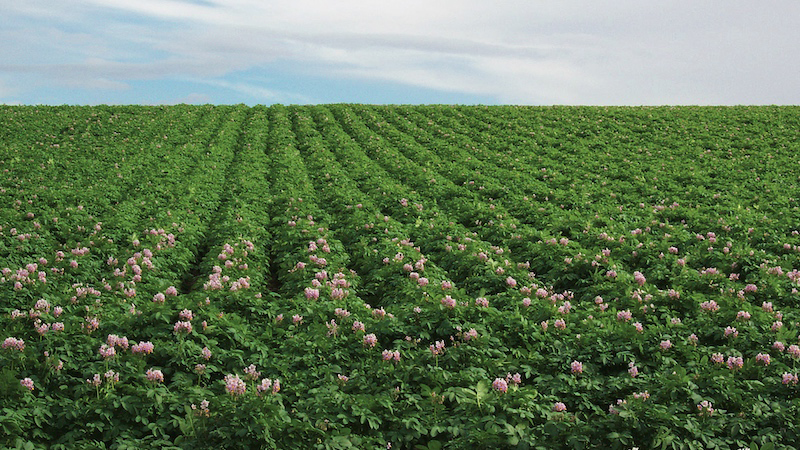How To Design Vineyards For Mechanization
While eliminating hand labor altogether obviously isn’t an option, vineyard mechanization can help growers lower operating costs at a time when margins are already tight. For growers wondering if investing in equipment is worth their while, Dr. Keith Striegler from the University of Missouri discussed some of the pros and cons and things all growers need to consider before implementing mechanization at the recent American Society for Enology and Viticulture (ASEV) Eastern Chapter conference in Painesville, OH. Striegler spoke about effectively designing vineyards for mechanization, including things all growers should consider before implementing equipment, both in existing vineyards and new ones.
New Plantings
For growers planting new vineyards, planning the layout to be conducive to mechanization from the get-go is critical, Striegler says. Uniformity is key, and the better the layout, the easier it will be to implement mechanization immediately or down the road when labor is in short supply.
“The uniformity of the vineyard is essentially laying your blocks out in a manner that allows you to have the greatest amount of uniform growth to the vine,” Striegler says. “[Growers should] lay out rows so they are as long as possible, because when you put a machine on a row, whether it’s peach trees or grapes or anything, the longer you can run with it, the more efficient you’ll be. Turning time reduces your efficiency.”
As far as trellis systems go, Striegler says the simpler the better. He adds that cane-trained vines are generally more difficult to mechanize, too.
Existing Vineyards
For existing vineyards, it’s important first to assess the vineyard to determine if it’s even suitable for mechanization. For example, if the vineyard is on a steep slope, it’s probably not going to be amenable to mechanization, Striegler says. “And you don’t want to mechanize it if it’s not a good producing vineyard,” he adds. “You want only to do that on a healthy vineyard that’s producing well for you.”
“It’s a cost benefit basis,” he says. “You’re going to decide to do it based on whether it makes financial sense for that vineyard block.”
Making The Investment
A concern many growers express is the cost of investing in the equipment. Small growers in particular often are concerned with how long it will take to get returns on their investments. Striegler says there is a certain amount of acreage a grower must have to make the investment worthwhile, but he points out that doesn’t necessarily mean mechanization is out of the question for smaller growers. “It may be acres of grapes you own in addition to acres of grapes you’re doing as custom work for someone else,” he says. “Or you may have a cooperative that purchases equipment together.”
Striegler is quick to note that investing in equipment does not mean eliminating people altogether. “When you convert to mechanization, the amount of management and the intensity of that management doesn’t decrease — it actually increases,” he says. “If you’re doing it strictly by machine and you miss a target yield or you don’t take as much off as you need to, you need to live with the consequences unless you have labor available.”
You need to have skilled equipment operators, too, Striegler adds. And for some growers, not investing won’t be an option. “The thing you’ll see in the East and the Midwest — sometimes growers don’t have a choice. If they’re going to stay in business, they’re going to have to spend the money to have the equipment, because labor may just not be available,” he says.
Future Advancements
According to Striegler, some recent advancements in mechanization are making it easier to achieve balanced cropping. “We’ve always talked about balanced pruning on vines, but balanced cropping is actually kind of a next step in that process,” he says. “What you’re doing with balanced cropping — and really doing it by machine is the only possible way to do it on large acreage — it allows you to set your final crop as late in the season as possible, and then that allows you to compensate for losses that may have occurred at various points during the growing season.”
In other words, you can leave an excess number of buds, maybe 150% or 200% of the number that you would normally leave by hand pruning. That then compensates for winter damage to buds, or a spring freeze that might damage vines. Or, if poor conditions during fruit set leave you with the number of clusters you need but not enough berries per cluster, balanced cropping allows you to compensate. “So it’s really a risk management approach — stabilizing your yield — and that’s very important to the bottom line for a grower,” Striegler says.
He adds that through the Specialty Crop Research Initiative, there have been some major investments into platforms for mechanization, and eventually, modules like robotic pruners, robotic shoot thinners, and robotic sprayers will be developed to fit on carriers. “That’s down the road,” Striegler says. “I don’t know how far down the road, but that’s definitely the direction things are going to go.”










